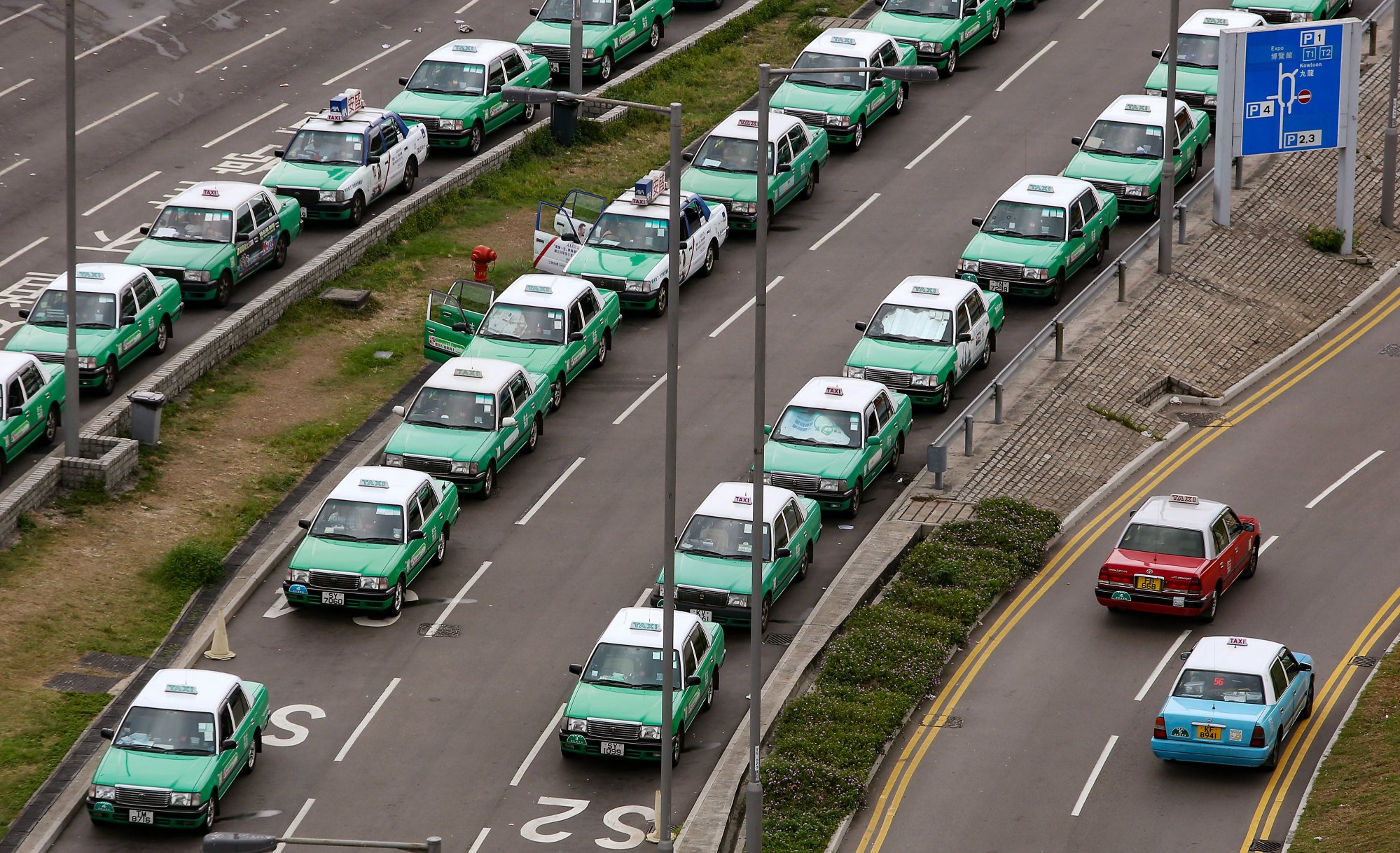
Hong Kong taxi fares could go up by 17% if industry proposal accepted by authorities, including a HK$5 jump to HK$32 for urban flag-fall charge
- Fare increases proposed for taxis serving urban areas, the New Territories and Lantau Island
- Trade suggests a flag-fall charge increase of HK$4.50 for green cabs in the New Territories and HK$6 for Lantau Island blue taxis
The Transport and Logistics Bureau said on Monday that it would discuss the proposal with lawmakers and the Transport Advisory Committee before it made recommendations to the Executive Council, the city’s key decision-making body.
It suggested a HK$5 increase for the flag-fall rate for red cabs in urban areas to HK$32, a HK$4.50 rise for green taxis in the New Territories and HK$6 for blue ones on Lantau Island – a uniform rate of HK$28.

The industry also suggested an increase in the incremental charge for the first-tier distance travelled after the flag fall to HK$2.10 for red taxis, HK$1.90 for green cabs and HK$1.80 for blue ones, a range between 10 and 20 HK cents.
The average rates for the fare increases would be 16.95 per cent for urban taxis, 15.37 per cent for the New Territories and 11.68 per cent for Lantau.
The latest statistics show that, after inflation was factored in, the average net income of cabbies in urban areas recorded an 6.2 per cent increase a month last year to HK$21,767.
That compared with pre-pandemic levels of about HK$19,360 a month in 2019.
Green cabs showed a 0.8 per cent increase and blue taxis recorded a 2.7 per cent fall in average net income last year.
A bureau spokesman suggested that the taxi trade still suffered from the after-effects of the pandemic for some months, despite the last fare increase in July 2022.
“Operating expenses in 2023 rose significantly compared with the 2019 levels, including a surge in insurance costs of nearly 60 per cent and an average increase in repair and maintenance costs of about 30 per cent,” he said.
He added it would be tough for the industry to maintain financial viability under the present fare structure.
The bureau said in the paper submitted to the legislature that it would “carefully review fare increase applications” based on five main considerations.
They included the need to strike a balance between vehicle supply and passenger waiting time, the financial viability of taxi operations and public acceptance of the proposed increases.
Hong Kong taxi drivers seek to raise flag fall charge by 20% amid higher costs
The two other criteria were the maintenance of a reasonable gap between taxi fares and public transport charges, and the need for the incremental charge to decrease in line with the length of the journey.
Authorities added in the Legco paper that they would improve the quality of cabs by inviting the industry to apply for taxi fleet licences later this month.
Authorities said earlier such fleets would be able to design distinctive liveries and markings and to charge customised fares for prearranged trips.
The bureau spokesman said further information would be released later this year and that it was hoped the new fleets would be operational by the middle of 2025.
He added that the bureau had also learned of the industry’s plans to introduce six-seater taxis, as well as the present four- and five-seater vehicles.
The legislature’s transport panel is expected to discuss the proposed fare increases on Friday.
Scott Leung Man-kwong, a lawmaker and member of the Legco transport panel, said that he understood the taxi industry’s difficulties, but predicted a substantial increase in charges would create a domino effect that could worsen its problems.
“It may signal other businesses that it is about time for price hikes,” he added.
“Especially when the taxi industry’s image is so negative, if it can’t fix its quality problems, people will just opt for alternatives, such as online car-hailing services.”
Hong Kong police recruit volunteers to help passengers avoid taxis overcharging
The government last July proposed the introduction of a two-tier penalty system for some taxi trade offences, including overcharging, refusing or neglecting to take a hire, and causing damage to, or alteration of, a taximeter.
A HK$10,000 fine and a six-month jail term for a first conviction were proposed as maximum punishments.
The penalty for further convictions would also be increased to a maximum fine of HK$25,000 and 12 months in jail.
The bureau said at the time the proposed penalty system was designed to hit repeat offenders with heavier penalties to boost the deterrent effect.
There are 18,163 taxis in the city – 15,250 red cabs, 2,838 green ones in the New Territories and 75 blue ones on Lantau.
The industry has said in the past that ride-hailing services, such as Uber, were its main competitor, and that they cost the traditional trade an estimated HK$20 million in revenue a day.
